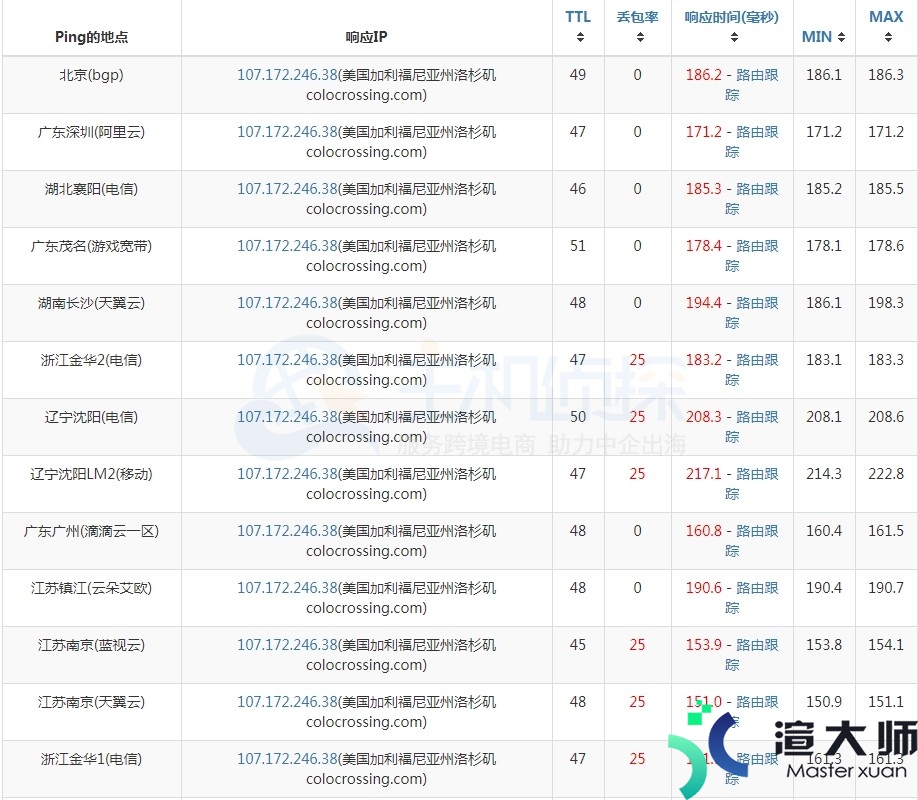大家好,今天来介绍宝塔docker怎么用(docker怎么用)的问题,以下是渲大师小编对此问题的归纳和整理,感兴趣的来一起看看吧!
docker安装zerotier设置tup
步骤如下:
1.安装DOCKER
在云服务器上安装DOCKER,简单一点的可以先安装宝塔面板,在宝塔面板市场丛脊里搜索DOCKER,这个几个docker管理器都可以用,关于如何安装宝塔可以自行百度一下,一天桥滚命令,非常简渗消渗单。
2.部署moon服务
安装dockerzerotier-moon服务打开宝塔终端工具,输入命令dockerpullseedgou/zerotier-moon,在docker上部署zerotier服务dockerrun--namezerotier-moon-d--restartalways-p9993:9993/udp-v/home/zerotier-moon:/var/lib/zerotier-oneseedgou/zerotier-moon-410.0.0.1。运行之后可以在docker面板里看到正常运行的moondocker服务。
注意:在宝塔面板安全里开放9993端口,如果是腾讯云或者其他云服务器记得在防火墙里开放9993端口服务。把刚刚挂载的目录里自动生成moons.d文件夹下载到本地备用
3.配置win客户端
Windows客户端加入moon自建节点将moons.d文件夹整个复制到ZeroTier安装目录下默认路径为:C:ProgramFiles(x86)ZeroTierOne,打开WindowsPowershell,输入命令zerotier-cliorbitxxxxxxxxxxxxxxxxxxxx,将xxxxxxxxxx替换为你的moonid,在服务器终端面板里运行下面命令查看moonid,dockerlogszerotier-moon,WindowsPowershell显示提示200orbitok表示添加moon节点成功此后重启zerotier,完毕。
4.测试服务
查看是否成功加入moon服务器节点,查看节点信息命令zerotier-clilistpeers,当你看到某一行后面带有moon字样,就证明已经加入到moon自建节点中其中PLANET为官方的根服务器。
怎样使用Docker帮助
一 直接输入docker命令来查看Docker客户端的所有命令选项。
[root@localhost ~]# docker
Usage: docker [OPTIONS] COMMAND [arg...]
docker [ --help -v --version ]
A self-sufficient runtime for containers.
Options:
--config=~/.docker Location of client config files
-D, --debug Enable debug mode
-H, --host=[] Daemon socket(s) to connect to
-h, --help Print usage
-l, --log-level=info Set the logging level
--tls 明凯歼 Use TLS; implied by --tlsverify
--tlscacert=~/.docker/ca.pem Trust certs signed only by this CA
--tlscert=~/.docker/cert.pem Path to TLS certificate file
--tlskey=~/.docker/key.pem Path to TLS key file
--tlsverify Use TLS and verify the remote
-v, --version Print version information and quit
Commands:
attach Attach to a running container
build Build an image from a Dockerfile
commit Create a new image from a container's changes
cp Copy files/folders between a container and the local filesystem
create Create a new container
diff Inspect changes on a container's filesystem
events Get real time events from the server
exec Run a command in a running container
export Export a container'孙瞎s filesystem as a tar archive
history Show the history of an image
images List images
import 激冲 Import the contents from a tarball to create a filesystem image
info Display system-wide information
inspect Return low-level information on a container, image or task
kill Kill one or more running containers
load Load an image from a tar archive or STDIN
login Log in to a Docker registry.
logout Log out from a Docker registry.
logs Fetch the logs of a container
network Manage Docker networks
node Manage Docker Swarm nodes
pause Pause all processes within one or more containers
port List port mappings or a specific mapping for the container
ps List containers
pull Pull an image or a repository from a registry
push Push an image or a repository to a registry
rename Rename a container
restart Restart a container
rm Remove one or more containers
rmi Remove one or more images
run Run a command in a new container
save Save one or more images to a tar archive (streamed to STDOUT by default)
search Search the Docker Hub for images
service Manage Docker services
start Start one or more stopped containers
stats Display a live stream of container(s) resource usage statistics
stop Stop one or more running containers
swarm Manage Docker Swarm
tag Tag an image into a repository
top Display the running processes of a container
unpause Unpause all processes within one or more containers
update Update configuration of one or more containers
version Show the Docker version information
volume Manage Docker volumes
wait Block until a container stops, then print its exit code
Run 'docker COMMAND --help' for more information on a command.
二 通过命令docker command --help更深入的了解指定的Docker命令使用方法。
[root@localhost ~]# docker version --help
Usage:docker version [OPTIONS]
Show the Docker version information
Options:
-f, --format string Format the output using the given go template
--help Print usage
[Docker] dockercompose使用教程
[Docker] 入门教程
https://www.jianshu.com/writer#/notebooks/20574865/notes/37511203
我们从 logo 上可以看出来, 说白了, 这个东西就是一个管理容器的闷和工(zhang)具(yu), 我们可以方便的使用它来管理我们的 docker 容器, 可以极大程度的简化命令行的复杂操作.
如果你是 Mac 或 Windows 用户使用桌面版本的 Docker 应用默认就会替你安装 docker-compose (下文中用dc代替), 如果是 centos 的话可以使用命令 yum -y install docker-compose 太简单了不做过多说明.
查看版本,能显示出来证明安装成功了
接下来我们有需求了, 运行一个宽弯 service-a 挂载到 /usr/local , 映射端口为 8082 并添加 servicehost 域名映射内网 ip ,很多人可以想到那应该是一条冗长 docker 命令
这么一大坨,看起来十分不方便,那么我们就是用 docker-compose 来优化一下
首先创建一个名为 docker-compose.yml 的文件
之后随便是用一个文本编辑器打开,写入下面内容
这样看起来是不是思路清晰多了呢,我们接下来运行一下
-d 后台运行,否则运行log就会出现在你的屏幕上。。。
然后查看一下运行状态
我们可以看到服务已经运行起来了,我们试着访问一下
http://localhost:8082/hello
成功,这一部分告一段落。
有的人会问,多个服务怎么运行呢?很简单,我们这里就来做一下。
下面我要做的是开启三个服务 service-a , service-b , service-eureka ,分别是一个注册中心和两个服务。
我们来完善一下 docker-compose.yml
我们来运行一下
注册中心
访问service-a
访问service-b
到这里我们已经可以运行起来多个服务了!!!!下课 - -
我们可以看到 docker-compose 会自动识别容慎罩闷器的开启状态,替我们开启需要开启的那一个
1.可能很多人对我的 echo 192.168.1.126 servicehost >> /etc/hosts 不是很理解
这里说一下,这句命令的意思是,把 servicehost 域名加入到 hosts 文件,目的是为了能让我的 eureka 发现我的服务,而不是把地址写死在配置文件中,这句命令对应的服务配置为
Ubuntu Docker 安装和使用
Docker 划分为CE 和EE。CE 即社区版(免费,支持周期三个月),EE 即企业版,强调安全,付费使用。
在Ubuntu系统中安装较为简单,官方提供了脚本供我们进行安装。
执行这个命令后,脚本就会自动的将一切准备工作做好,并且把Docker CE 的Edge版本安装在系统中。
启动Docker CE
建立docker 用户组
默认情况下,docker 命令会使用Unix socket 与Docker 引擎通讯。而只有root 用户和docker 组的用户才可以访问Docker 引擎的Unix socket。出于安全考虑,一般Ubuntu系统上不会直接使用root 用户。因此,更好地做法是将需要使用docker 的用户加入docker用户组。
注销当前用户,重新登录Ubuntu,输入迟岁核docker info,此时可以直接出现信息。
配置国内镜像加速
在/etc/docker/daemon.json 中写入如下内容(如果文件不存在请新建该文件)
重新启动服务
测试
我们通过 docker 的两个参数 -i -t,让 docker 运行的容器实现"对话"的能力:
各个参数解析:
-t: 在新容器内指雀拆定一个伪终端或终端。码掘
-i: 允许你对容器内的标准输入 (STDIN) 进行交互。
我们可以通过运行 exit 命令或者使用 CTRL+D 来退出容器。
使用以下命令创建一个以进程方式运行的容器
二、使用Docker安装 MySQL
用 docker search mysql 命令来查看可用版本:
2、拉取 MySQL 镜像
这里我们拉取官方的最新版本的镜像:
3、查看本地镜像
使用以下命令来查看是否已安装了 mysql:
4、运行容器
安装完成后,我们可以使用以下命令来运行 mysql 容器:
大小写敏感
参数说明:
-p 3306:3306 :映射容器服务的 3306 端口到宿主机的 3306 端口,外部主机可以直接通过 宿主机ip:3306 访问到 MySQL 的服务。
MYSQL_ROOT_PASSWORD=123456:设置 MySQL 服务 root 用户的密码。
使用docker exec进入Docker容器
从容器里面拷文件到宿主机
docker cp mysql-5.7:/etc/mysql/ /home
从宿主机拷文件到容器里面
docker cp /home/s/my.cnf mysql-5.7:/etc/mysql/
大小写敏感修改
/etc/my.cnf 中的[mysqld]后添加添加lower_case_table_names=1,重启MYSQL服务 0敏感 1不敏感
开启远程连接
5、安装成功
通过 docker ps 命令查看是否安装成功:
6、连接
mysql -u root -P3308 -h 127.0.0.1 -p
谁可以简单介绍一下docker到底是干什么用的
1)测试:缓握Docker 很适合卜早用于测试发布,将 Docker 封装后可以直接提供给测试人员进行运行,不再需要测试人员与运维、开发进行配合,进行环境搭建与部署。
2)测试数据分离:在测试中,经常由于测试场景变换,需要修改依赖的数据库数据或者清空变动 memcache、Redis 中的缓存数据。Docker 相较于传统的虚拟机,更轻量与方便。可以很容易的将这些数据分离到不同的镜像中,根据不同需要随时进行切换。
3)开发:开发人员共同使用同一个 Docker 镜像,同时修改的源代码都被挂载到本地磁盘。不再因为环境的不同而造成的不同程序行为而伤透脑筋,同时新人到岗时也能迅速建立开发、编译环型哪雀境。
4)PaaS 云服务:Docker 可以支持命令行封装与编程,通过自动加载与服务自发现,可以很方便的将封装于 Docker 镜像中的服务扩展成云服务。类似像 Doc 转换预览这样的服务封装于镜像中,根据业务请求的情况随时增加和减少容器的运行数量,随需应变。
本文地址:https://gpu.xuandashi.com/72598.html,转载请说明来源于:渲大师
声明:本站部分内容来自网络,如无特殊说明或标注,均为本站原创发布。如若本站内容侵犯了原著者的合法权益,可联系我们进行处理。分享目的仅供大家学习与参考,不代表本站立场!





